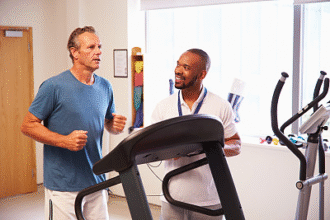Short, High‑Intensity Workouts You Can Do Anywhere
You do not need an hour or a gym to get meaningful health and fitness benefits. Well‑planned short bursts of higher‑intensity work can improve cardiorespiratory fitness, insulin sensitivity, and stamina in a fraction of the time required for longer steady sessions. When time is tight, a simple interval like a four‑minute bodyweight Tabata—twenty seconds of work and ten seconds of rest repeated eight times with movements such as squats or burpees—delivers a potent stimulus. Whether this is “better” than an hour of easy treadmill running depends on your goals, preferences, and current condition: intervals are extremely time‑efficient for fitness gains, while longer, easier efforts excel at building endurance, aiding recovery, and reducing stress. Both have a place; choose the mix that you can perform consistently and safely.
Intensity should be earned gradually. Begin with a brief warm‑up, practice each movement with control, and keep the work sets short enough that your technique stays crisp from start to finish. Two to three high‑intensity sessions per week interleaved with active recovery or moderate efforts suit most people, and very short “exercise snacks” of one to two minutes sprinkled through the day can add up. Cool down with a minute or two of easier movement and steady breathing to help your heart rate settle.
Variety makes short training blocks more engaging and more complete. Early in the twentieth century, the French physical educator Georges Hébert popularized a “natural method” of training that emphasized broad movement capacities—from walking and running to jumping, climbing, lifting and carrying, throwing, crawling, balancing, swimming, and self‑defense. You can echo that spirit without special equipment by rotating movements across weeks: step‑ups on stairs, fast walks or short hill sprints, jump‑rope or low hops, crawling patterns, makeshift carries, or shadowboxing. Outdoors or at home, the environment can be your gym; the goal is to move with intent and variety.
Safety comes first. If you are new to vigorous exercise, recovering from illness or injury, pregnant, or living with heart, lung, or metabolic conditions, consult a clinician or qualified exercise professional and start with moderate intervals before building intensity. Stop immediately and seek advice if you experience chest pain, marked shortness of breath out of proportion to effort, dizziness, palpitations, or unusual joint pain. Use the talk test as a simple guide—during harder intervals, speaking is limited to a few words; during recovery periods, you should be able to speak in full sentences.
Time will always be scarce, but minutes compound. A handful of focused efforts each week, performed with good form and steady progression, can meaningfully improve how you feel and function. Start small, keep it enjoyable, and let consistency do the heavy lifting.







